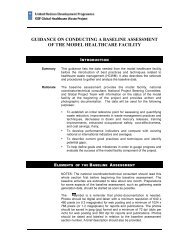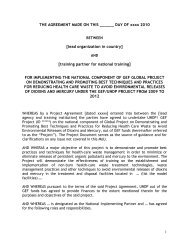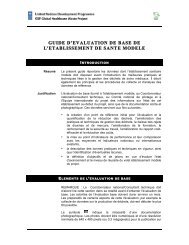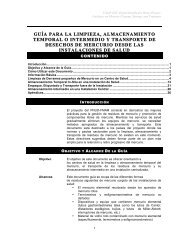Latvia
Latvia
Latvia
You also want an ePaper? Increase the reach of your titles
YUMPU automatically turns print PDFs into web optimized ePapers that Google loves.
Health systems in transition<br />
<strong>Latvia</strong><br />
Whereas higher-income individuals sometimes make use of voluntary<br />
insurance to cover user charges and/or the “purchase” of shorter waiting times,<br />
or services in the private sector, this option is not available to low-income<br />
people.<br />
Another factor that reduces access to services for some groups includes<br />
geographical distances from services, including even primary care services,<br />
due to geographical imbalances in service distribution throughout the country.<br />
For low-income individuals, this imposes the additional costs of transportation.<br />
Further, for people with special needs, there are virtually no special provisions<br />
facilitating their access to health care services (or services in general).<br />
Implementation of the Master Plan (discussed extensively in previous<br />
chapters) aims to rationalize the geographical distribution of primary, secondary<br />
and emergency facilities throughout the country, and should help to lessen<br />
problems of access to services due to geographical barriers. The problems of<br />
access due to the financial barriers imposed by poverty and user charges, as well<br />
as long waiting times due to budgetary insufficiencies, are more intractable, and<br />
require seeking out solutions over both the shorter and longer terms. Economic<br />
growth over the longer term will help increase budgetary resources that will<br />
ease some of the current financial constraints. Over the shorter term, immediate<br />
attention and efforts to resolve the problem of the “leakage” of significant<br />
amounts of tax revenue from the Government’s budget would help increase the<br />
health care budget (as well as all other budgets). In addition, attention should<br />
focus on the reduction of health system inefficiencies as far as possible, since<br />
improvements in efficiency (i.e. achieving the same result for a smaller financial<br />
outlay) is in effect equivalent to increases in financial resources (this issue is<br />
discussed in more detail in the paragraphs that follow).<br />
Equity in financing is associated with the concept of vertical equity,<br />
interpreted to mean that individuals who differ with respect to income levels<br />
should be treated differently, i.e. higher-income people should be expected<br />
to pay more than low-income individuals. The more progressive a payment<br />
system (such as taxation), the greater the degree of vertical equity. Therefore,<br />
a progressive tax system offers the potential for greater vertical equity than<br />
proportionate taxation, while OOP payments, which are regressive, provide<br />
the least amount of vertical equity.<br />
The majority of funds for the health budget come from general tax revenue,<br />
which is based on a system of proportionate taxation of personal income and<br />
company profits, as well as a series of indirect taxes (VAT, excise taxes, etc.), all<br />
of which are by their nature regressive. A limited degree of progressivity may be<br />
said to apply to the system of personal taxes, in view of certain deductions per<br />
taxpayer and dependants that lower the taxable income; however, on balance<br />
233
















